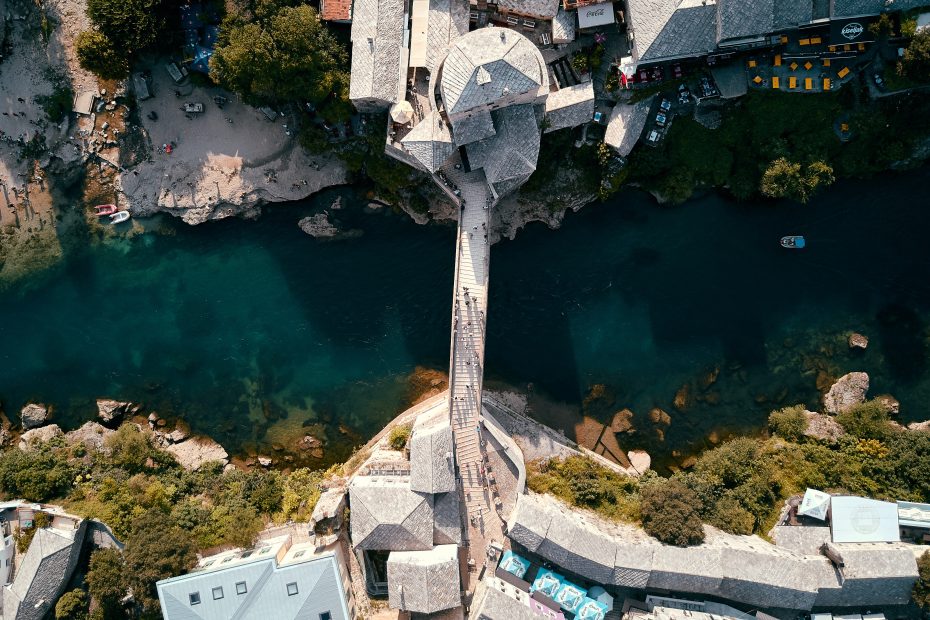Table of Contents
Introduction
Bosnia and Herzegovina is a small country in Southeastern Europe with a complex history and multi-ethnic society. Located on the border between the Eastern and Western worlds, its culture and politics have been shaped by influences from both sides. Once part of Yugoslavia, Bosnia has gone through periods of prosperity and horrific war. Today, years after the devastating conflict of the 1990s, the country is still working to heal divisions and rebuild itself as a fully functioning state. With stunning natural beauty, a rich cultural heritage, and youthful, forward-looking population, Bosnia and Herzegovina has the potential to serve as a bridge between East and West.
Geography
Bosnia and Herzegovina is situated in the western part of the Balkan Peninsula, bordering Croatia, Serbia, and Montenegro. Shaped like a triangle, it is a geographically diverse country. In the north are plains and plateaus, while the central and southern regions are mountainous. Major rivers like the Sava, Bosna, and Neretva flow through Bosnia and Herzegovina. Due to its inland location and mountains, it has a moderate continental climate with cold winters and hot summers. The country’s breathtaking landscapes range from lush forests to lakes, canyons, and waterfalls. Popular destinations include the Vjetrenica Cave, Kravice Waterfalls, and mountain towns like Sarajevo, the capital. Overall, Bosnia’s geography connects it firmly to both Eastern and Western Europe.
People and Culture
Bosnia and Herzegovina has a multi-ethnic population including Bosniaks (Muslim Slavs), Serbs (Orthodox Slavs), and Croats (Catholic Slavs). This diversity stems from the country’s position between empires and religions over the centuries. The Ottoman Empire controlled Bosnia for nearly 400 years, leaving Islamic influences. But proximity to Roman Catholic Europe also impacted culture. Bosnian food integrates both, like börek pastries and cevapi sausage. Folk traditions involve music and dance styles like upbeat kolo circles. Bosnia’s art scene prospered in the 20th century with celebrated painters like Ismet Mujezinović. The collision of ethnic identities and histories in Bosnia has created a complex national identity.
Economy
As part of socialist Yugoslavia, Bosnia underwent industrialization and economic growth from 1945 to 1990. But the transition to capitalism and a market economy after independence was rocky. The civil war in the early 1990s caused production to plummet by 80%. Unemployment soared and poverty increased. Since the end of the war, more trade, foreign investment, and EU funding have helped Bosnia recover. Joining NATO’s Membership Action Plan and applying for EU membership reflect Bosnia’s economic alignment with the West. However, widespread corruption and bureaucratic hurdles continue hampering development. Ongoing reforms aim to reduce red tape and modernize state-owned firms. The economy has a long road ahead but is moving gradually forward.
Politics
Bosnia has a complex power-sharing political system set up after the war. The 1995 Dayton Peace Agreement established two autonomous regions – the Federation of Bosnia and Herzegovina (mainly Bosniak and Croat) and Republika Srpska (mainly Serb). Above them is the central state government. Each region has its own president, parliament, and control over regional policies like education and healthcare. The three-member multi-ethnic presidency promotes collaboration between factions. But inefficient administration, corruption, and ethnic disputes have obstructed reform efforts. Relations with neighbors Croatia, Serbia, and Montenegro involve trade as well as debates over borders and war crimes. As Bosnia vies for EU membership, it must further democratize and unite politically.
Tourism
Since the late 2000s, tourism in Bosnia and Herzegovina has expanded steadily. Its unspoiled nature, historic sites, cuisine, and culture draw more visitors each year. Popular activities include hiking through mountain areas like Sutjeska National Park, rafting rivers like the Tara, and skiing at resorts like Jahorina. Old towns like Mostar with its iconic arched bridge are top destinations. Festivals showcasing film, music, and traditional arts also attract tourists. Growth of tourism services like hotels has increased economic activity and jobs. But work is still needed on infrastructure, marketing, and sustainable practices. Overall, tourism represents a bright spot for Bosnia’s economy with much unrealized potential.
Challenges
Despite progress since the 1990s conflict, Bosnia contends with deep challenges. The civil war between ethnic groups left lasting trauma and weakened institutions. Efforts at inter-ethnic reconciliation have had mixed success. Economic woes like high unemployment, especially among youth, have caused brain drain. Some bosnians remain frustrated with sluggish post-war recovery and reforms. Nationalist and non-democratic parties retain support. However, young people are increasingly focused on bread-and-butter issues instead of ethnic politics. Anti-government protests in 2014 reflected desire for change. With support from the EU and continued democratic transition, Bosnia can overcome its challenges.
Conclusion
Given its turbulent history but strategic location, Bosnia and Herzegovina is poised to serve as a bridge between Eastern and Western Europe. Its geographic and cultural diversity, developing economy, and normalization of politics present opportunities. Cautious optimism exists that Bosnia can move past its divisions and fulfill its potential. By embracing openness, pragmatic reforms, and its identity as a multi-ethnic state, Bosnia can draw from the best of both the East and West. The road ahead remains long, but Bosnia’s young generation may lead the country to a more integrated and prosperous future.
FAQs
What are the main ethnic groups in Bosnia?
The three largest ethnic groups are Bosniaks (Bosnian Muslims), Serbs (Orthodox), and Croats (Catholic).
What religion do most Bosnians follow?
Around 50% of Bosnians are Muslim, 30% Orthodox Christian, and 15% Roman Catholic.
What major historical influences shaped Bosnian culture?
Bosnian culture was shaped by centuries under Ottoman Turkish rule as well as ties to Slavic and Central European cultures. These diverse influences can be seen in Bosnian traditions.
What countries were part of Yugoslavia with Bosnia?
Along with Bosnia, Yugoslavia included Serbia, Croatia, Macedonia, Montenegro, and Slovenia.
Who were the main parties to Bosnia’s civil war in the 1990s?
The war involved Bosnian government forces, Bosnian Serb forces, and Bosnian Croat forces.
